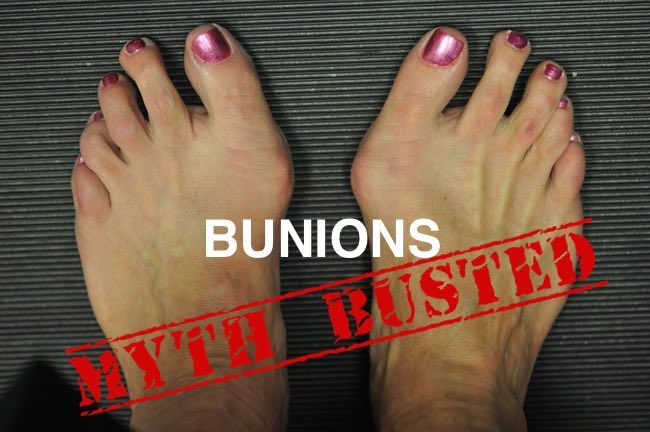
Bunions – Myths Exposed
A bunion, also know as a ‘Hallux valgus deformity’, is a painful deformity that occurs at the base of the big toe (the 1st MTP joint). A complex mechanism results in a painful prominence forming on the inside of the great toe, and the toe itself begins to migrate towards the 2nd toe.
The history behind the word ‘bunion’ is difficult to find. It is thought to have arisen in the 18th century from an east Anglican term ‘bunny’ used to describe a lump or swelling. Since then, bunions have been entrenched in medical terminology, with an increasing understanding of what they are and how they form.
Over the years, there have been several misconceptions regarding the simple bunion. With our greater understanding of how a bunion forms, we can take a look back at some of these myths that are still around today.
Bunions are only seen in the elderly
If you ask someone to paint a picture of the ‘typical’ patient that suffers from bunions, the image that usually jumps to mind is an elderly lady. While bunions are certainly commonly seen in this age group, they can occur at any age, including in teenagers. The term used to describe this condition is ‘adolescent bunion’, and has been reported in up to 30% of teenage girls. There is often a strong family history of bunions in this situation.
Bunions will resolve with time
This is unfortunately not true. Once a bunion deformity begins to develop, the natural progression over time is for the severity to increase. This may be associated with the development of arthritis and progressive deformity of the adjacent toes.
Bunions are a cosmetic issue only
There are many reasons that people with bunions seek treatment, and it is not always related to the appearance of the foot. A bunion deformity can cause pain. This may be secondary to callus formation with shoes, the development of arthritis in the big toe (1st MTP joint), or the transfer of forces to the ball of the foot (transfer metatarsalgia). Typically a combination of symptoms are present that leads to one seeking bunion treatment.
Shoe wear causes all bunions
This is a controversial topic and not completely understood. While the development of bunions is less common in populations that don’t wear shoes, an irrefutable link between tight footwear and bunion formation has not been identified. Certainly the use of tight narrow shoes is likely to exacerbate the symptoms of a bunion, and more appropriate shoes are often required. An ‘Adolescent bunion’ often develops on the background of a strong family history of bunions, and there are many other factors contributing to the development of a bunion deformity.
Bunion surgery is very painful
Bunion ‘surgeries’ have been performed since the 19th century. Certainly the ‘open’ procedures of the past, with minimal thought to pain relief may result in a painful postoperative recovery. The techniques that are currently available are all aimed at minimising patient discomfort following the procedure, and producing the best cosmetic result possible.
It is now standard practice for patients undergoing bunion surgery to receive an ‘ankle block’. This represents infiltration of local anaesthetic around the nerves that supply sensation to the foot. The technique consistently provides strong pain relief during the immediate recovery phase. In combination with appropriate oral analgesics and a keyhole technique, surgeons are now able to pay very close attention to the comfort level of patients.
All bunion surgeries are the same
Over 100 different operations have been described for bunion surgery over the years. You will be glad to know that the available techniques for bunion surgery have advanced a great deal in recent years. The requirement of crutches and a cast for months is a thing of the past. Minimally invasive keyhole bunion techniques have been developed to minimise soft tissue scarring and promote early mobility.
With these recent advances, patients are able to mobilise immediately following the procedure, which can be performed as a day case.
Bunion surgery leaves unsightly scars
Traditional bunion surgery involves making a lengthy incision along the inner border of the foot to carry out the ‘osteotomies’ required to re-align to toe. While there are many different ‘osteotomies’ described, traditional surgery is all done via an ‘open’ approach producing a scar along the inner border of the foot.
Recent advances in minimally invasive keyhole techniques have allowed for bunion corrections to be performed through tiny incisions on the foot. This technique is performed with the use of x-ray guidance during the procedure and often no sutures are required. Keyhole bunion corrections minimise scarring of the skin, resulting in an improved cosmetic result.
